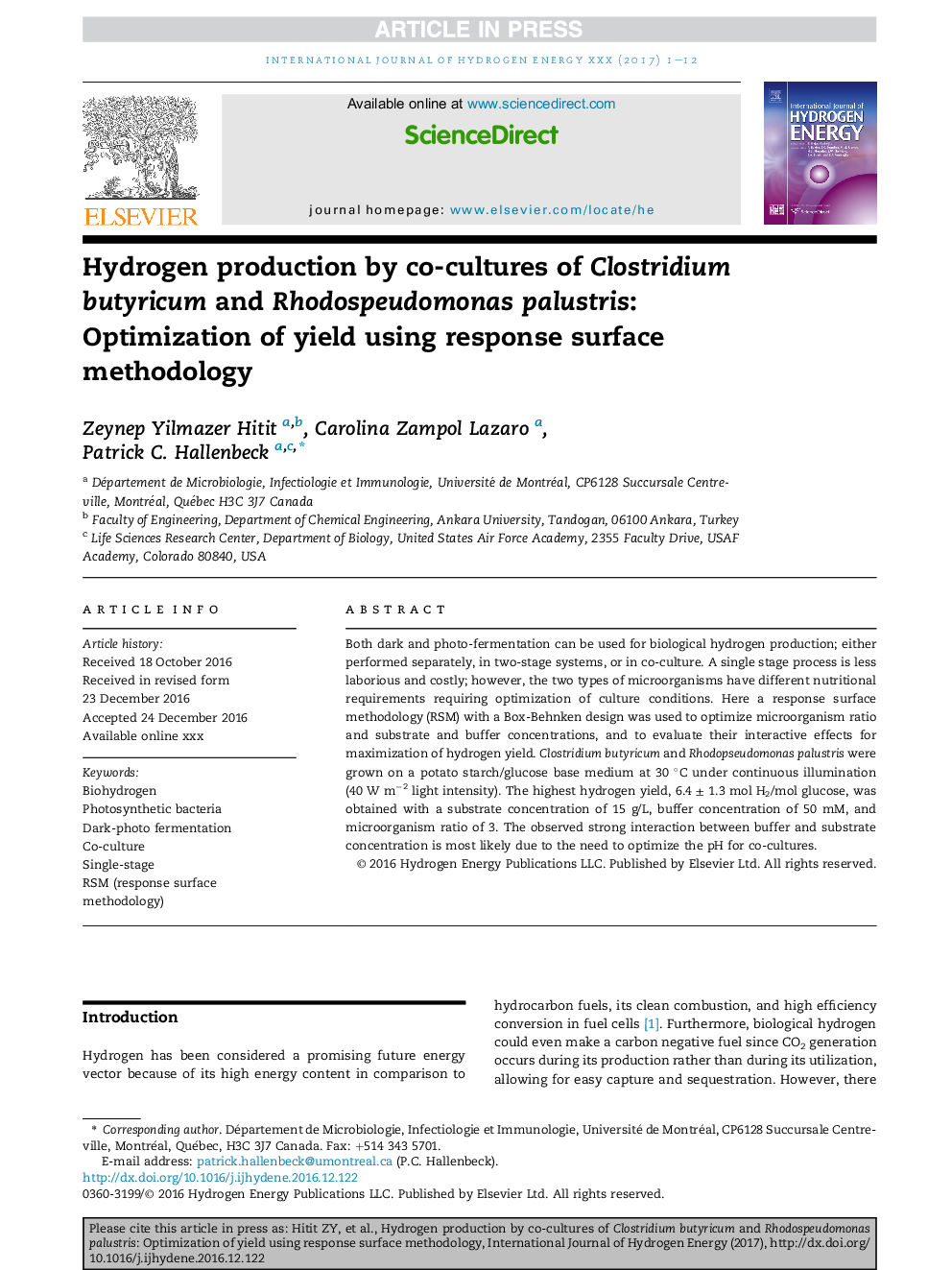| Article ID | Journal | Published Year | Pages | File Type |
|---|---|---|---|---|
| 5146098 | International Journal of Hydrogen Energy | 2017 | 12 Pages |
Abstract
Both dark and photo-fermentation can be used for biological hydrogen production; either performed separately, in two-stage systems, or in co-culture. A single stage process is less laborious and costly; however, the two types of microorganisms have different nutritional requirements requiring optimization of culture conditions. Here a response surface methodology (RSM) with a Box-Behnken design was used to optimize microorganism ratio and substrate and buffer concentrations, and to evaluate their interactive effects for maximization of hydrogen yield. Clostridium butyricum and Rhodopseudomonas palustris were grown on a potato starch/glucose base medium at 30 °C under continuous illumination (40 W mâ2 light intensity). The highest hydrogen yield, 6.4 ± 1.3 mol H2/mol glucose, was obtained with a substrate concentration of 15 g/L, buffer concentration of 50 mM, and microorganism ratio of 3. The observed strong interaction between buffer and substrate concentration is most likely due to the need to optimize the pH for co-cultures.
Related Topics
Physical Sciences and Engineering
Chemistry
Electrochemistry
Authors
Zeynep Yilmazer Hitit, Carolina Zampol Lazaro, Patrick C. Hallenbeck,
